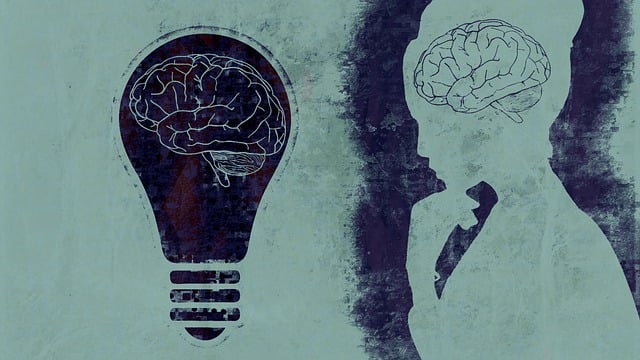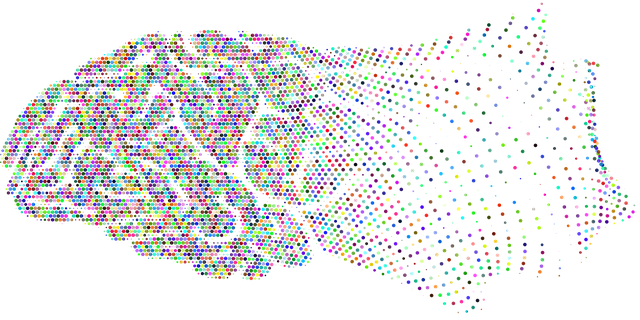Community outreach programs are crucial in addressing mental health concerns among children, especially those with bipolar disorder. These initiatives bring therapy directly to families, fostering understanding, breaking stigma, and enhancing well-being. Effective outreach involves tailored communication and conflict resolution strategies to engage children and caregivers, providing accessible support networks. Designing therapy programs requires a multifaceted approach incorporating evidence-based techniques like CBT and family-focused models to empower kids in managing symptoms, recognizing triggers, and developing coping strategies. Personalized strategies for at-risk communities, including tailored therapy and resilience-building initiatives, stabilize mood fluctuations and promote mental wellness. Evaluating these programs involves dual assessment of immediate and long-term impacts on participation rates, symptom changes, academic performance, social interactions, and public attitudes towards mental illness.
Community outreach programs play a vital role in addressing children’s mental health, especially regarding bipolar disorder. This article explores strategies to improve access to therapy for at-risk youth, focusing on designing effective treatment plans tailored to their unique needs. We delve into engaging communities, offering support, and measuring the impact of these initiatives. By understanding the importance of early intervention, we can revolutionize care, ensuring a brighter future for children struggling with bipolar disorder. Discover practical approaches to enhance mental well-being through community outreach.
- Understanding the Need for Community Outreach in Children's Mental Health
- Designing Effective Therapy Programs for Bipolar Disorder in Kids
- Strategies for Engaging and Supporting At-Risk Communities
- Measuring Success: Evaluation and Long-Term Impact of Outreach Initiatives
Understanding the Need for Community Outreach in Children's Mental Health

In many communities, addressing children’s mental health issues is a growing concern, with conditions like bipolar disorder on the rise. Community outreach programs play a pivotal role in early intervention and support for young individuals facing these challenges. By bringing therapy and resources directly to affected families, these initiatives foster understanding and empathy within the community, breaking down barriers and stigma often associated with seeking mental health assistance.
Effective outreach involves implementing strategies such as conflict resolution techniques and communication approaches tailored to engage both children and their caregivers. These programs aim to educate, provide support networks, and offer accessible therapy for children with bipolar disorder, ultimately enhancing their overall well-being and resilience.
Designing Effective Therapy Programs for Bipolar Disorder in Kids

Designing effective therapy programs for bipolar disorder in children requires a nuanced approach that caters to their unique needs and developmental stages. It’s crucial to create engaging and age-appropriate therapeutic interventions that address the emotional volatility, mood swings, and potential co-occurring conditions often associated with pediatric bipolar disorder. A multi-faceted strategy can include individual and group therapy sessions, incorporating evidence-based techniques such as cognitive-behavioral therapy (CBT) and family-focused treatment models. These programs should aim to empower children to manage their symptoms, recognize triggers, and develop coping strategies while fostering resilience and improving overall mental wellness.
Integrating activities that promote self-awareness and stress management, like mental wellness journaling exercises, can be valuable tools in the therapy process. Additionally, addressing burnout prevention and mental illness stigma reduction efforts is essential within these programs. By implementing supportive environments and evidence-based practices tailored to children’s specific challenges, therapists can significantly enhance their ability to lead stable and fulfilling lives despite facing bipolar disorder.
Strategies for Engaging and Supporting At-Risk Communities

Engaging at-risk communities requires tailored strategies that address their unique needs and challenges. One effective approach is providing therapy for children with bipolar disorder, which can help stabilize mood swings and improve overall mental health. Community outreach programs can facilitate access to these therapeutic interventions, fostering a sense of belonging and support among youth.
Implementing resilience building initiatives through self-awareness exercises and mental wellness journaling exercises offers another layer of support. These activities empower individuals to recognize their emotions, cultivate coping mechanisms, and develop a positive sense of self—all crucial components in navigating adversity. By incorporating such practices, outreach programs can strengthen the community’s collective resilience, enabling members to weather life’s challenges with greater ease.
Measuring Success: Evaluation and Long-Term Impact of Outreach Initiatives

Evaluating the success of community outreach programs aimed at supporting children with bipolar disorder is a multifaceted process. It involves assessing both immediate outcomes and long-term impact. Direct measures could include tracking participation rates in therapy for children with bipolar disorder, as well as gathering feedback from parents and caregivers regarding changes in symptoms and behavior. Additionally, qualitative data such as interviews or focus groups can provide insights into the experiences of both children and their families, shedding light on how outreach initiatives have fostered inner strength development.
Long-term evaluation should consider the broader effects of these programs. For instance, tracking students’ academic performance and social interactions over time might reveal improvements linked to the mental wellness journaling exercises guided by outreach initiatives. Furthermore, measuring changes in public attitudes towards mental illness through surveys or community discussions can gauge the effectiveness of stigma reduction efforts. Such comprehensive evaluations ensure that outreach programs are not only reaching their intended audience but also driving lasting positive changes within the community.
Community outreach programs play a pivotal role in addressing the mental health needs of children, especially those with bipolar disorder. By implementing tailored therapy programs and adopting strategies that resonate with at-risk communities, we can significantly enhance access to care. Through rigorous evaluation and measurement of success, these initiatives ensure long-term positive impacts on youth well-being. Focusing on evidence-based practices, such as early intervention and community engagement, we can foster healthier, more resilient futures for children grappling with bipolar disorder. This holistic approach empowers both individuals and communities, ultimately improving mental health outcomes for our youngest members.














